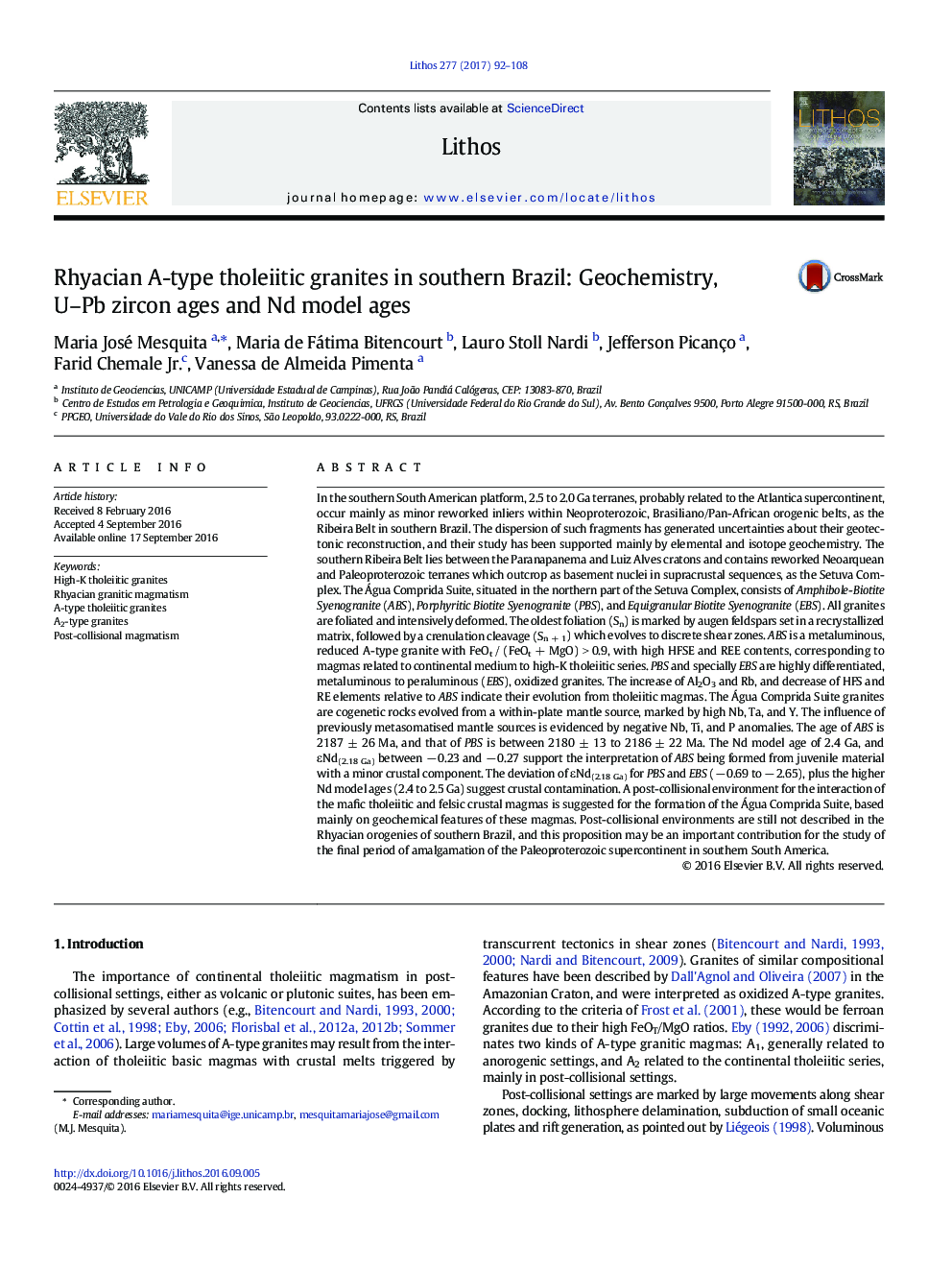| Article ID | Journal | Published Year | Pages | File Type |
|---|---|---|---|---|
| 5784082 | Lithos | 2017 | 17 Pages |
â¢Rhyacian granitic rocks of Água Comprida Suite from southern Brazil are classified as high-K tholeiitic A-type rocks.â¢Água Comprida Suite granites are products of mixed mantle-crustal sources.â¢The geochemistry, U - Pb zircon ages and Nd model ages of Água Comprida Suite are consistent with post-collisional setting.
In the southern South American platform, 2.5 to 2.0 Ga terranes, probably related to the Atlantica supercontinent, occur mainly as minor reworked inliers within Neoproterozoic, Brasiliano/Pan-African orogenic belts, as the Ribeira Belt in southern Brazil. The dispersion of such fragments has generated uncertainties about their geotectonic reconstruction, and their study has been supported mainly by elemental and isotope geochemistry. The southern Ribeira Belt lies between the Paranapanema and Luiz Alves cratons and contains reworked Neoarquean and Paleoproterozoic terranes which outcrop as basement nuclei in supracrustal sequences, as the Setuva Complex. The Água Comprida Suite, situated in the northern part of the Setuva Complex, consists of Amphibole-Biotite Syenogranite (ABS), Porphyritic Biotite Syenogranite (PBS), and Equigranular Biotite Syenogranite (EBS). All granites are foliated and intensively deformed. The oldest foliation (Sn) is marked by augen feldspars set in a recrystallized matrix, followed by a crenulation cleavage (Sn + 1) which evolves to discrete shear zones. ABS is a metaluminous, reduced A-type granite with FeOt / (FeOt + MgO) > 0.9, with high HFSE and REE contents, corresponding to magmas related to continental medium to high-K tholeiitic series. PBS and specially EBS are highly differentiated, metaluminous to peraluminous (EBS), oxidized granites. The increase of Al2O3 and Rb, and decrease of HFS and RE elements relative to ABS indicate their evolution from tholeiitic magmas. The Água Comprida Suite granites are cogenetic rocks evolved from a within-plate mantle source, marked by high Nb, Ta, and Y. The influence of previously metasomatised mantle sources is evidenced by negative Nb, Ti, and P anomalies. The age of ABS is 2187 ± 26 Ma, and that of PBS is between 2180 ± 13 to 2186 ± 22 Ma. The Nd model age of 2.4 Ga, and εNd(2.18 Ga) between â 0.23 and â 0.27 support the interpretation of ABS being formed from juvenile material with a minor crustal component. The deviation of εNd(2.18 Ga) for PBS and EBS (â 0.69 to â 2.65), plus the higher Nd model ages (2.4 to 2.5 Ga) suggest crustal contamination. A post-collisional environment for the interaction of the mafic tholeiitic and felsic crustal magmas is suggested for the formation of the Água Comprida Suite, based mainly on geochemical features of these magmas. Post-collisional environments are still not described in the Rhyacian orogenies of southern Brazil, and this proposition may be an important contribution for the study of the final period of amalgamation of the Paleoproterozoic supercontinent in southern South America.
